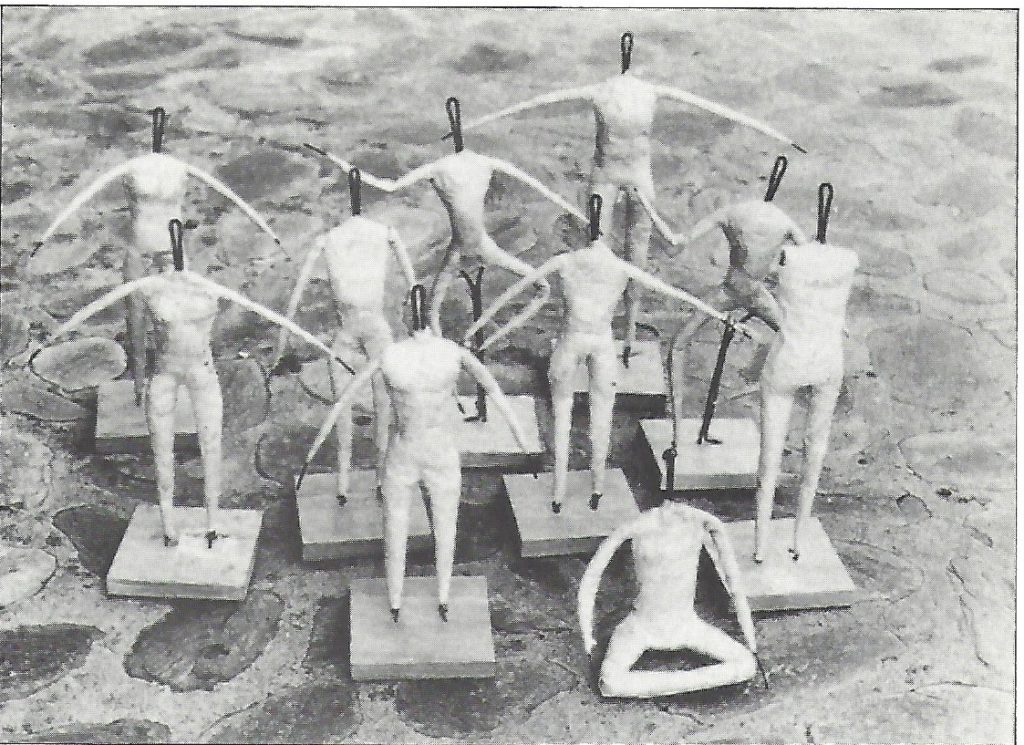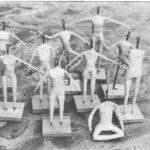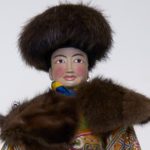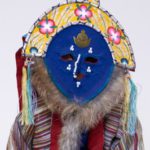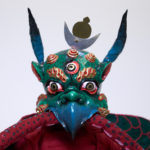Origin and Significance
In December 1983 the Council for Religious and Cultural Affairs of the Tibetan government-in-exile, in Dharamsala, India, initiated the Losel Doll Project. Its goals were to revive the artistic traditions of Tibetan monks; preserve Tibet’s rich cultural heritage of regional, secular, and religious costumes; and to sell the Losel Dolls worldwide to help support the tens of thousands of Tibetan refugees in India and Nepal.
Since costumed dollmaking had not been a traditional art form in Tibet, the Council enlisted the help of a small group of “artist” monks from the Drepung Loseling Monastery, in Dharamsala, whose traditional methods of creating elaborate garments for statues of deities, intricate wall tapestries, and sculpted figures for monasteries were well-suited to doll making.
By June 1984, following meticulous research into the origins and details of traditional Tibetan costumes, the monks and their apprentices had completed 14 costumed Losel Dolls.
That summer, following the dolls’ successful premiere at the Library of the Dean of Westminster Abbey, in London, several organizations, including the Musée d’ethnographie of Geneva and the Tibet Society of the United Kingdom, commissioned replicas of the dolls. In 1985, when the curator of the Asian section of La Fondation Alexandra David-Néel, in France, expressed an interest in acquiring a large collection, the monks agreed to create additional dolls.
Between 1985 and 2003 the doll collection grew to 170 and, with marketing assistance from the Norbulingka Institute of Tibetan Culture, in Dharamsala, the monks sold hundreds of trademarked replicas to museums, retail representatives, and private collectors. Norbulingka also became the home of the Losel Doll Museum, where the entire collection is displayed in detailed dioramas representing the daily life and customs of the Tibetan people.
Ranging in height from 5 to 25 inches, the dolls are made from wire, fine clay, Tibetan paper, cotton, and papier-mâché. Garments are hand-tailored from wool, cotton, silk brocade, and animal furs—even long strands of hair from the tails of Tibetan yaks. Elaborate headdresses, jewelry, and other accessories, created from a variety of decorative beads and metal trinkets, complete each costume.
Today the Losel Dolls remain a remarkable testament to the artistry of the monks who created them and a compelling record of the traditional clothing, customs, and spirit of the Tibetan people.
